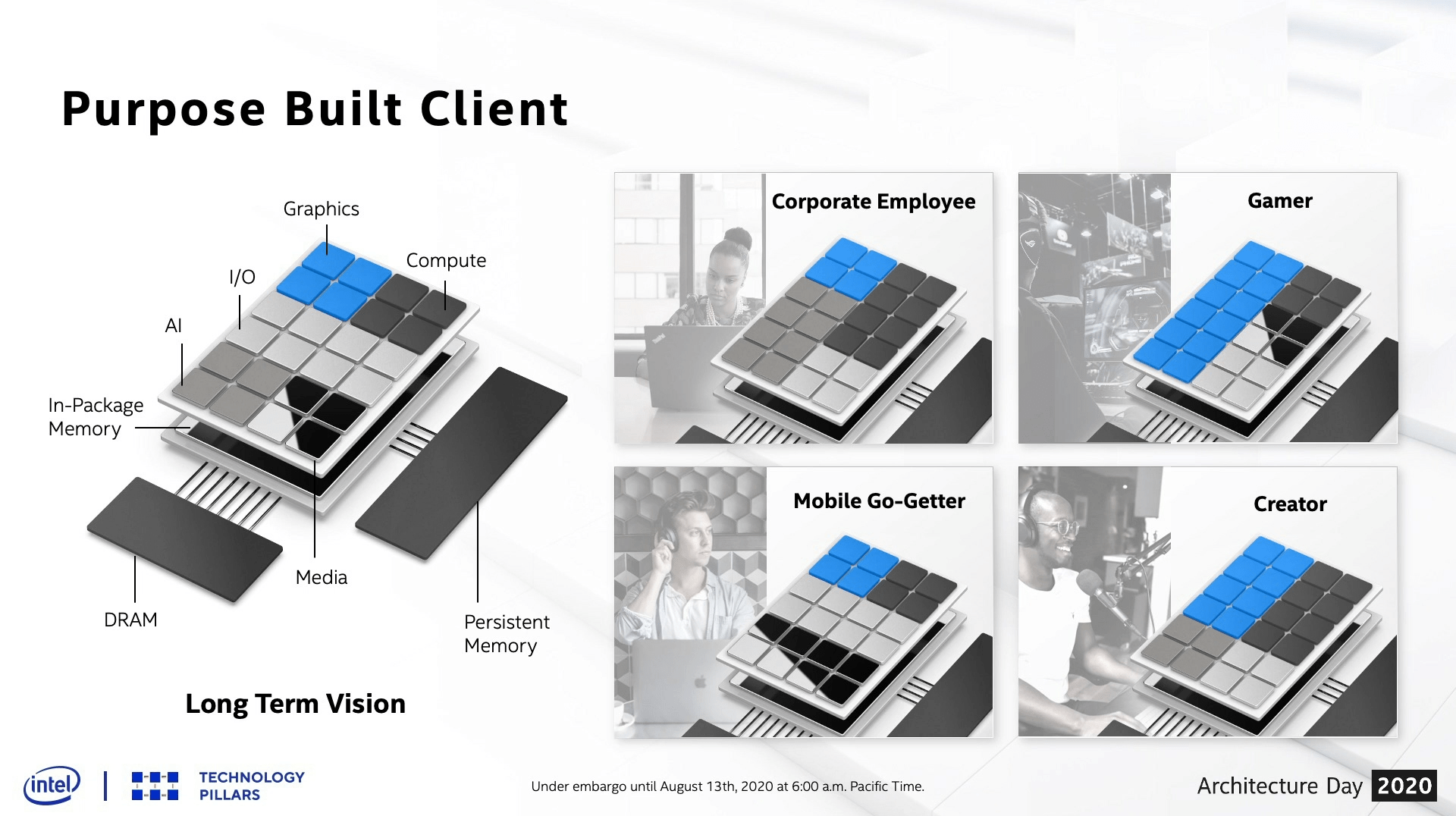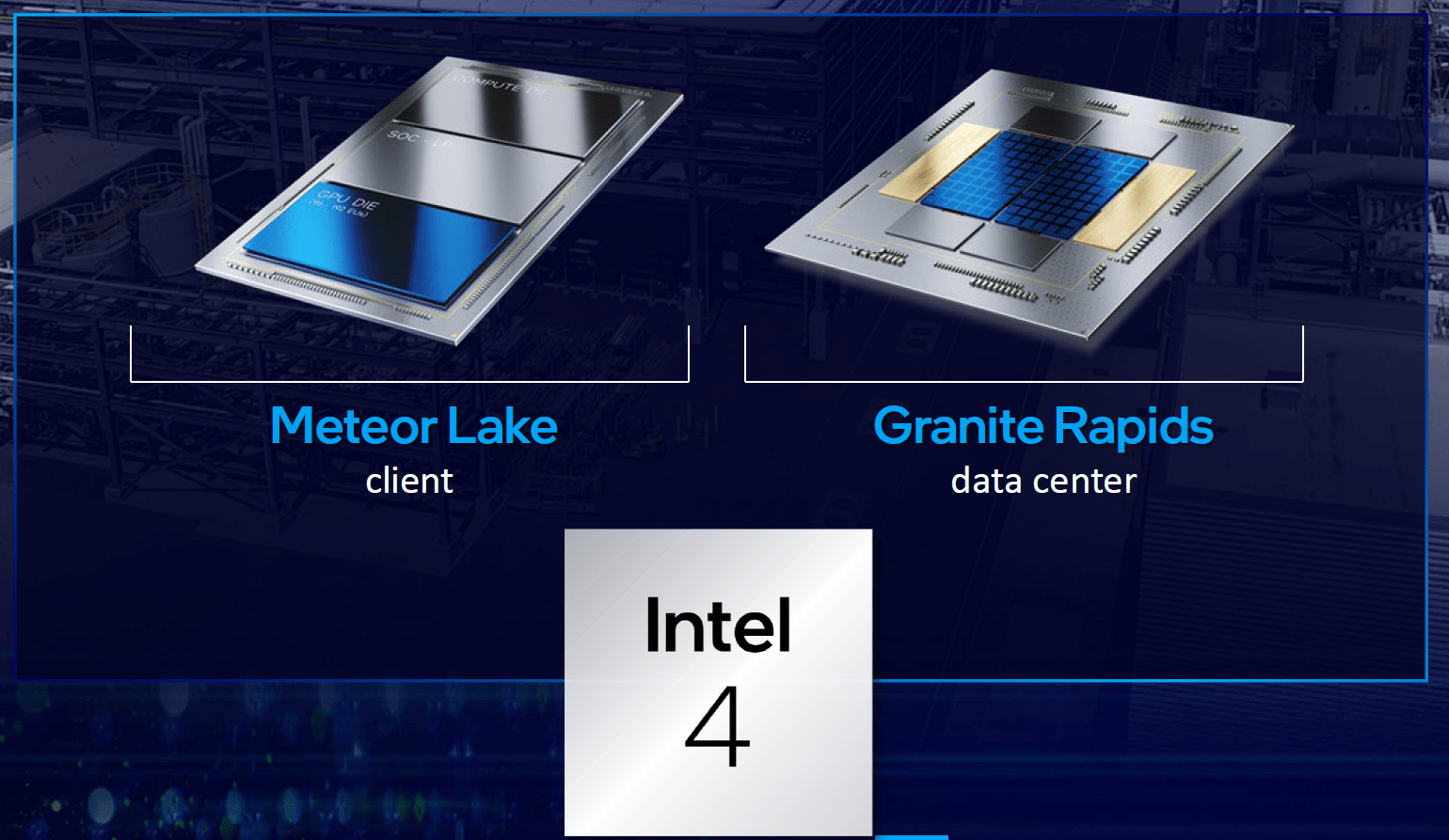As part of the nocturnal manufacturing event in German times, Intel also published small snippets of information on upcoming CPUs. They range from Alder Lake and Sapphire Rapids, which will appear as the first solution in “Intel 7” from autumn, to Meteor Lake and Granite Rapids.
Official charts for Alder Lake and Sapphire Rapids
The rumor mill about Alder Lake has recently been very busy, in view of the upcoming start in autumn this year, underpinned by Intel with hints for the end of October, but there are also a corresponding number of samples in circulation. The new official diagram from Intel now underpins what has already been assumed: The architecture offers up to eight small cores, which are shown schematically in two combinations of four, as well as eight large cores, which are also accommodated in a four-way arrangement on the package. The cache should be located between the cores in the middle, so that the information has short distances to all cores. On the right in the picture sits the graphics unit, on the opposite side the Uncore part and other elements.

Sapphire Rapids is to follow in the first half of 2022 for the data center. Intel also provides a picture here that was recently omnipresent due to rumors: four CPU tiles sit on one package. So far, 15 cores per tile are assumed that communicate with each other via EMIB, so that the package will offer 60 cores.
Surprisingly open to Meteor Lake
Intel has been surprisingly open about the next new generation of client solutions, code-named Meteor Lake. Not only has the TDP range been limited from 5 to 125 watts (Intel has not yet officially confirmed this for Alder Lake), but also revealed the first details about the equipment. Here, too, Intel will rely on tiles and ultimately build a multi-chip CPU using Foveros and EMIB. There are matching the first pictures, one of the wafer with pure CPU tiles from Meteor Lake, one of the Foveros basic structure. These could hardly be more different: on the one hand tiny CPU chips, on the other hand the huge package.
 Intel wafer with Meteor Lake CPU tiles in Intel 4 (Image: Intel)
Intel wafer with Meteor Lake CPU tiles in Intel 4 (Image: Intel)  Intel wafer for Foveros package chips for Meteor Lake (Image: Intel)
Intel wafer for Foveros package chips for Meteor Lake (Image: Intel) Not only will the CPU be found in multiple tiles on the package, but also the GPU and the SoC part. Only then does the finished product become. The modular principle allows Intel to interconnect chips as required: a CPU tile and a GPU tile for entry, then several CPU tiles and several GPUs for up to 192 EUs.
 Meteor Lake with up to 192 EUs at a maximum of 125 watts (Image: Intel)
Meteor Lake with up to 192 EUs at a maximum of 125 watts (Image: Intel) Intel had already revealed last year that this modular principle will one day come. As AMD has already shown with the I/O die chiplet approach at Ryzen and Epyc, a suitable CPU can be built on known elements depending on the market environment.
 Client products based on the modular principle (Image: Intel)
Client products based on the modular principle (Image: Intel) First teaser also about Granite Rapids
Intel's Granite Rapids data center CPU is also offered in the same production stage as Meteor Lake. And for the first time, Intel also showed a picture of this architecture. The modular principle is further refined, many small CPU tiles – the picture shows 60 per half and thus a total of 120 – characterize the construct, flanked by fast memory and other elements. But Granite Rapids won't come until 2023 at the earliest.
 Meteor Lake and Granite Rapids in Intel 4 (Image: Intel)
Meteor Lake and Granite Rapids in Intel 4 (Image: Intel) Packaging the basis of all new developments
The whole modular principle does not work without the right packaging. With EMIB, Intel presented years ago and created a fast connection for chips lying next to each other on a package, Foveros has been officially in use since Lakefield. Both technologies are being developed further, the distance between the “bumps” getting smaller and smaller. Foveros will debut in the second generation with Ponte Vecchio and will later also be used in Meteor Lake, the future offshoots of Foveros will be further optimized for stacking. Foveros Direct is reminiscent of TSMC's 3D Stacking, which will debut in AMD's Ryzen with an additional L3 cache in late 2021/early 2022.
 Intel EMIB and Foveros (Image: Intel)
Intel EMIB and Foveros (Image: Intel) 
